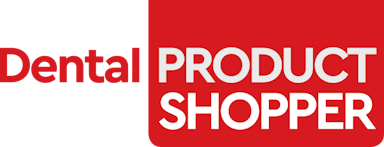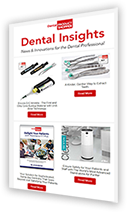
 In the eyes of customers, perhaps no other dental manufacturer is more tightly associated with its founder than BISCO. Research chemist Dr. Byoung I. Suh founded BISCO—and named it using his initials—in 1981, and continues to be hands-on in the development of new and improved materials. From small-scale beginnings, BISCO is now headquartered in a 91,000-square-foot facility in Schaumburg, IL, with an extensive research and development laboratory. There, BISCO’s R&D team uses state-of-the-art equipment to continually develop and upgrade products, all of which are manufactured in the United States.
In the eyes of customers, perhaps no other dental manufacturer is more tightly associated with its founder than BISCO. Research chemist Dr. Byoung I. Suh founded BISCO—and named it using his initials—in 1981, and continues to be hands-on in the development of new and improved materials. From small-scale beginnings, BISCO is now headquartered in a 91,000-square-foot facility in Schaumburg, IL, with an extensive research and development laboratory. There, BISCO’s R&D team uses state-of-the-art equipment to continually develop and upgrade products, all of which are manufactured in the United States.
“My background as a chemist has driven us to focus on creating products that improve the standards of dentistry with the best chemistry available to make products that are truly better both for dentists and their patients,” Dr. Suh told DPS.
Three of BISCO’s more recent innovations are among the favorites of Dental Product Shopper’s evaluators, who were recently surveyed about the products they prefer to use on a daily basis. Here, we’ll tell the stories of the 2018 winners: TheraCal LC, ALL-BOND UNIVERSAL, and TheraCem.
TheraCal LC
Launched in 2011, TheraCal LC is a light-cured resinmodified calcium silicate indicated for direct and indirect pulp capping and for use as a protective base/liner.
TheraCal LC’s hallmark feature is its unique apatite-stimulating ability. Its calcium release1* and alkaline pH promote the formation of hydroxyapatite and a secondary dentin bridge.2,3,4
“There aren’t many products out there that promote healing,” said DPS evaluator Dr. Abraham Jaskiel of Miami, FL, who selected TheraCal LC as his go-to product for pulp capping and lining materials. “I love TheraCal LC’s calcium release.”
As an alternative to calcium hydroxide, glass ionomer, RMGI, and other materials, TheraCal LC performs as a stable and durable barrier to protect and insulate the dental pulpal complex.3 Because it is moisture tolerant1 and radiopaque, it can be confidently placed under all restorative materials and cements.
TheraCal LC is delivered directly from the syringe, and the thin needle dispensing tip provides precise placement in all deep cavity preps. Dr. Jaskiel noted that he previously used a different brand for pulp capping and cavity lining, but it required mixing. “TheraCal LC is much easier to use,” he said. “Additionally, it can be light-cured.”
Further simplifying handling, the light-cured set permits immediate placement and condensation of restorative material. Its thixotropic formulation allows for a command set with a light-curing unit while maintaining ease of placement.
All-Bond Universal
Launched in 2012, ALL-BOND UNIVERSAL is an ethanol water-based 8th-generation one-bottle adhesive for all direct and indirect restorations. It can be used with total-, self-, and selective-etch techniques.
“This is as simple as it gets,” according to DPS evaluator Dr. John Horn of Hegins, PA. Apparently, many of his colleagues agree. ALL-BOND UNIVERSAL requires no activator, combining primer and adhesive in a single bottle for fast, simple bonding.
Tight-fitting restorations are no longer problematic with ALL-BOND UNIVERSAL, and its low film thickness does not affect cementation. After light-curing, the material seals both chemically and mechanically to virtually eliminate postop sensitivity.
“The no-etch adhesives I used before regularly caused postop sensitivity,” Dr. Jaskiel said. “As soon as I started using ALL-BOND UNIVERSAL, the incidence of sensitivity decreased dramatically.”
“Because of its versatility, tolerance, and performance, ALL-BOND UNIVERSAL has become the go-to bonding system in our practice,” said Jack D. Griffin Jr., DMD, AAACD, of Eureka, MO. “Regardless of the etch technique used—self, total, or selective—ALL-BOND UNIVERSAL excels.”
 TheraCem
TheraCem
Launched in 2016, this dual-cured selfadhesive resin cement is for cementing indirect restorations, including luting crowns, bridges, inlays, onlays, and posts.
TheraCem continuously releases calcium and fluoride,5 and it transitions from acidic to alkaline pH in minutes,6 warranting its descriptive brand name and setting it apart from other resin cements. The material bonds reliably and durably to all popular substrates, including zirconia. TheraCem’s proprietary chemistry enables it to achieve a high degree of conversion, enhancing physical properties and improving bond strength.
While the calcium release and alkaline pH are its flagship selling points, users appreciate and frequently laud the simplified use.
 “TheraCem is very easy to use,” noted educator and clinician Dr. David Hornbrook. “It’s self-mixing, dual-cure, goes to a gel state simply by waving a curing light around the margins, and cleans up easily.” Dr. Hornbrook also appreciates TheraCem’s translucency, which offers much better esthetics under the new metal-free materials when compared to more opaque resin cements. Additionally, it’s highly radiopaque.
“TheraCem is very easy to use,” noted educator and clinician Dr. David Hornbrook. “It’s self-mixing, dual-cure, goes to a gel state simply by waving a curing light around the margins, and cleans up easily.” Dr. Hornbrook also appreciates TheraCem’s translucency, which offers much better esthetics under the new metal-free materials when compared to more opaque resin cements. Additionally, it’s highly radiopaque.
Dr. Jaskiel appreciates that TheraCem does not require refrigeration. “I love being able to store it in the operatory so I can just grab and go when I need it,” he said.
* Bisco has, on flle, the calcium release data for TheraCal LC.
1 Gandolfi MG, Siboni F, Prati C. Chemical-physical properties of TheraCal, a novel light-curable MTA-like material for pulp capping. International Endodontic Journal. 2012 Jun;45(6):571–9.
2 ADA definitions for direct and indirect pulp capping at: www.ada.org/en/publications/cdt/glossary-of-dental-clinical-and-administrative-ter.
3 Apatite-forming Ability of TheraCal Pulp-Capping Material, M.G. GANDOLFI, F. SIBONI, P. TADDEI, E. MODENA, and C. PRATI J Dent Res 90 (Spec Iss A):abstract number 2520, 2011 (www.dentalresearch.org).
4 Okabe T, Sakamoto M, Takeuchi H, Matsushima K (2006) Effects of pH on mineralization ability of human dental pulp cells. Journal of Endodontics 32, 198–201.
5 Gleave CM, Chen L, Suh BI. Calcium & fluoride recharge of resin cements. Dent Mater. 2016 (32S):e26.
6 New Self-adhesive Resin Cement With Alkaline pH. Chen L, Gleave C, Suh B, J Dent Res 96(A):#286, 2017.





